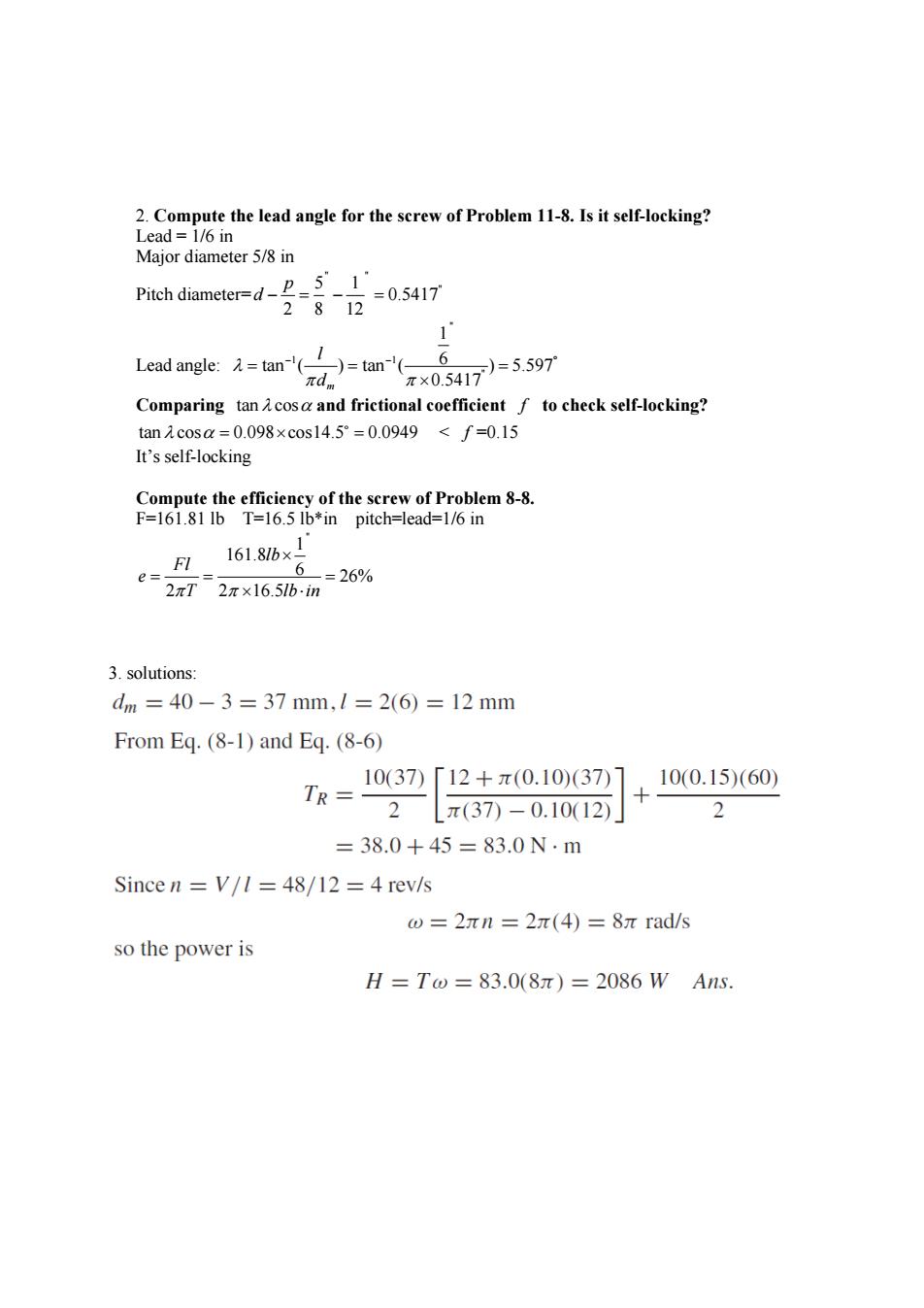正在加载图片...

2.Compute the lead angle for the screw of Problem 11-8.Is it self-locking? Lead=1/6 in Major diameter 5/8 in Pitch diameter=d-p=51 =0.5417 2812 1 Lead angle:2=tan-()=tan(6 πd, r×0.5417)=5597° Comparing tan cosa and frictional coefficient f to check self-locking? tan1cosa=0.098×cos14.5°=0.0949<f=0.15 It's self-locking Compute the efficiency of the screw of Problem 8-8. F=161.81 Ib T=16.5 Ib*in pitch=lead=1/6 in 1 Fl 161.8b× e= 2πT 6=26% 2π×16.5lb-in 3.solutions: dm=40-3=37mm,l=2(6)=12mm From Eq.(8-1)and Eq.(8-6) 10(37) 「12+π(0.10)(37)1,10(0.15)(60) TR= 2 π(37)-0.10(12)」 2 =38.0+45=83.0N·m Since n =V/I=48/12=4 rev/s ω=2πn=2π(4)=8πrad/s so the power is H=Tw=83.0(8π)=2086WAns.2. Compute the lead angle for the screw of Problem 11-8. Is it self-locking? Lead = 1/6 in Major diameter 5/8 in Pitch diameter= " " 5 1 " 0.5417 2 8 12 p d Lead angle: " 1 1 " 1 6 tan ( ) tan ( ) 5.597 0.5417 m l d Comparing tan cos and frictional coefficient f to check self-locking? tan cos 0.098 cos14.5 0.0949 < f =0.15 It’s self-locking Compute the efficiency of the screw of Problem 8-8. F=161.81 lb T=16.5 lb*in pitch=lead=1/6 in " 1 161.8 6 26% 2 2 16.5 lb Fl e T lb in 3. solutions: